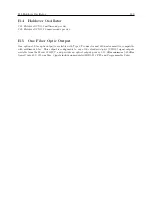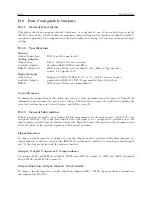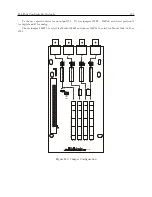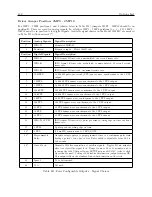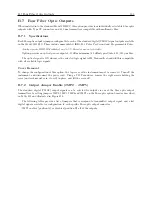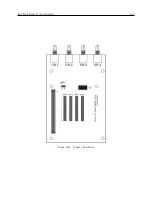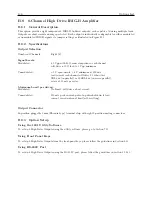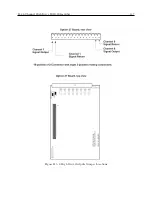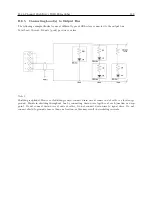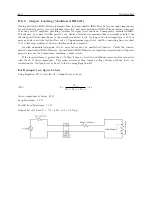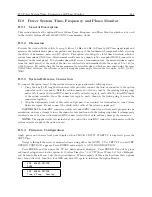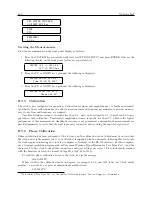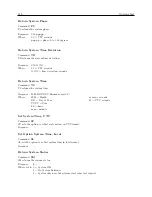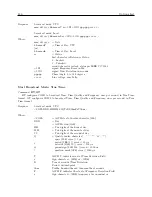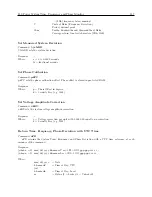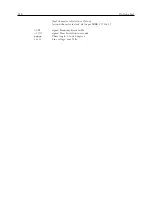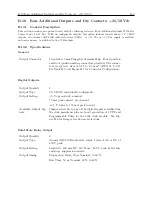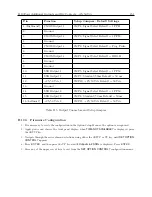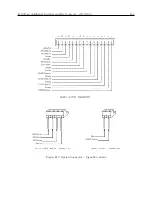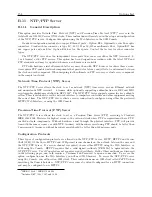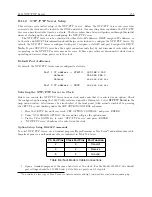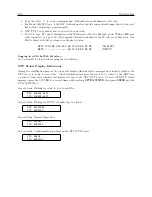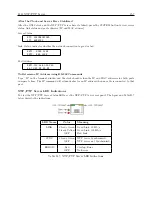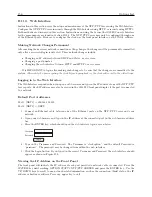
B.9 Power System Time, Frequency and Phase Monitor
143
B.9.7
Amplitude Calibration
For amplitude calibration, the format is similar, replacing PC with RV. The calibration factor is approxi-
mately 1.0, and is multiplied by the measured result to generate the displayed value. If an accurate ac source
at 50 Hz or 60 Hz is available (for example, the Arbiter Systems, Inc. Model 1040C Panel Meter Calibrator),
the error can be measured and the correction factor entered as described. For example, if 120 Vrms is applied
to the option assembly, and the display indicates 119.1 Vrms, the calibration factor is (120.0 / 119.1) or
1.0076. You would enter 1.0076,1201RV to calibrate the unit (Model 1201B/C). The display should then
read close to 120.0 Vrms. To clear the calibration factor, you may set the unit to factory defaults or send
the command 1,1201RV.
B.9.8
Option: Specific RS-232 Commands
The following symbols and syntax are used throughout the RS-232 Commands listing and are repeated here
for emphasis:
C
Shorthand for Carriage-Return, Line-Feed.
U
UTC Time, Channel A (or B).
L
Local Time, Channel A (or B).
Fifteen (15) RS-232 commands are available with this option. The following conventions apply to all
RS-232 communications:
•
Phase angle, in all messages, is defined as zero (or 360) for the positive-going zero crossing coincident
with 1 PPS-GNSS, and is scaled between zero and 360 degrees. Phase angle increases with frequency
below nominal (50 Hz or 60 Hz) and decreases with frequency above nominal; in other words, if the
zero crossing occurs just after 1 PPS-GNSS, the phase angle will be just above zero, and if the zero
crossing occurs just prior to 1 PPS-GNSS, phase angle will be just under 360
◦
.
•
Time deviation decreases (becomes more negative) with frequency below nominal, and increases (be-
comes more positive) with frequency above nominal.
B.9.9
Option Commands
Return System Frequency
Command:
FS
FS returns system frequency.
Response:
SS ff.fff
C
Where:
SS = UTC seconds
ff.fff = frequency, Hz
Return System Frequency Deviation
Command:
FD
FD returns the system frequency deviation.
Response:
SS
±
f.fff
C
Where:
SS = UTC seconds
f.fff = frequency, Hz
Summary of Contents for 1201B
Page 4: ...iv ...
Page 153: ...B 7 Four Fiber Optic Outputs 135 Figure B 4 Jumper Locations ...

